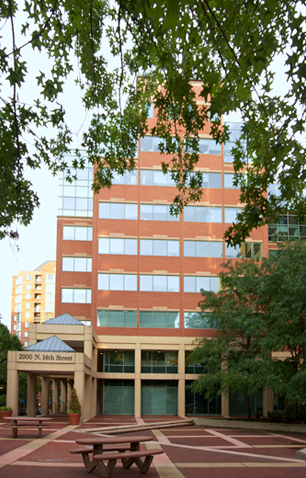Green Construction
Operations & maintenance best practices for new construction
WHY GREEN DESIGN?
Over one-third of the total energy produced, and two-thirds of the electricity generated is consumed just by buildings annually. In addition, the average commercial construction project in North America can generate up to 1.13 kilograms (2.5 pounds) of solid waste per square foot of occupied floor space. A Green Design has an immediate impact on properties by helping to reduce operating costs, enhance employer marketability, and has the potential to increase occupant productivity. It also demonstrates a commitment to a sustainable community that has a positive impact on public health and the environment by reducing energy and natural resource consumption and cutting down on waste and pollution.
Green Design in workplaces also have a range of financial drivers that can assist in securing a competitive advantage. This can provide the following benefits:
- Enhance company reputation
- Attract and retain skilled employees
- Enhance employee health, wellbeing, and productivity
- Reduce Liability
Some of the economic benefits of a green building are:
- Reduce utility bills and operating costs with more efficient energy and water systems
- Lower waste and dumping costs through use of landfill diversion measures (recycling/reuse programs)
- Lower energy bills from more efficient and optimized HVAC systems
This timeline is intended to be used as a guide to inform the overarching ESG goals for the project while ensuring alignment with Penzance’s corporate goals for sustainability. Its greatest ESG impact and economic value will be realized when applied at the Concept Development Phase to inform the project specific Penzance Vision Statement, Design Concept, and ultimately as part of the process.
Material Health & Safety
Outside of meeting basic material restrictions for widely known hazardous ingredients in newly installed building materials, specifically asbestos, mercury and lead, materials in the Living Building Challenge’s Red List of prohibited materials or ingredients should be avoided on the basis of their detrimental human and/or environmental impacts. https://living-future.org/red-list/
Waste Management
An effective waste management program is based on the 3Rs, Reduce, Recycle and Reuse.
- Reduce: prevent damage of materials due to mishandling, improper storage and contamination so they do not end up as waste. Where possible, use prefabricated components built at a central facility to avoid waste generation at the site. An important element of the commitment to waste management is ensuring effective documentation is kept during the construction process through waste diversion reports: a compilation of waybills, invoices, letters and other documentation from suppliers/contractors that is appropriately indexed and shows product types, quantities and details of waste diverted and waste sent to landfill.
- Recycle: contractors should contact local salvaging/recycling companies and arrange for recycling services. At a minimum, they should ensure the following waste materials that could not be reused and may be generated throughout demolition or construction are recycled:
- Concrete / masonry / stone
- Plastic
- Steel and other metals
- Blue Box waste
- Wood
- Glass
- Gypsum
- Ceiling tiles
- Cardboard
- Carpet
- Reuse: consider any existing fixtures and furniture that can be reused, including material, equipment and resources from existing premises. If demolition of some or all of the premises is to be undertaken ensure suppliers, contractors and/or subcontractors retrieve / retain packaging (e.g. skids, plastic wrap etc.) for reuse.
Other best practices related to waste management during new construction and development activities include:
- Designating a central Waste Collection Area onsite that is dedicated to the separation and storage of all waste generated during demolition and construction.
- Providing separate containers in the Waste Collection Area that are sized to accommodate the estimated amount of each waste type and quantity. If space is insufficient to provide proper sorting, ship all materials to a sorting station.
- Clearly indicating the material type being stored in each container using appropriate signage and labels.
- Requesting suppliers and contractors provide a letter listing the item(s) to be reused and the item(s) and quantity being removed from the site. Those items being removed from the site should be compared against a list of proposed salvaging / recycling facilities to be used and further specify the material(s) that will be accepted by each facility and whether the material(s) will be reused, recycled or sent to landfill.


